Filler games, light games, quick games. Those smaller games with shorter playing times. Maybe you pull them out when you’re waiting for the rest of your gaming group to arrive. Maybe they get played to cap off a gaming session. Maybe they’re the main event, with multiple games planned.
Regardless of what you call them or how you choose to play them, knowing which filler games to consider adding to your shelves can be difficult. When it comes to reviews, they tend to get overlooked in favor of more complex games.
To help with this, we’re doing a slightly different take on our usual Top 6 list. Instead of limiting our recommendations to six games, the six in this case are six Meeple Mountaineers who have come together to each suggest three filler games worthy of your attention. Think of it as a Top (6 x 3 =) 18 of Killer Fillers!
Tom Franklin
Quarto
A two-player abstract about not being the first to complete a four-in-a-row sequence of pieces with the same characteristic. There are four different attributes: tall, short, solid tops, and/or with an hole in the top. These are placed on a tight 4×4 board. The rule that makes this game stand out is that you hand your opponent the piece they’re going to place on the board—and vice versa.
 A Game of Thrones: Hand of the King
A Game of Thrones: Hand of the King
Even if you’re not A Game of Thrones fan, this set collection game is quick to set up and play. Shuffle, then set out all 36 character cards in a 6×6 grid. On a turn, each player moves a designated card orthogonally, onto another character. They then claim all the characters of the same house as the character they land on. Claim the majority of a house and you earn their house banner. However, another player can take that banner by only having an equal number of house characters. Have the most house banners at the end of the game and you win.
 Space Park
Space Park
A race to 20 points collecting space crystals while traversing the seven tiles of the game, Space Park’s use of 3D rockets will quickly get you into the game’s theme. Combinations of crystals are traded in for Tickets, which get you points and may grant you special abilities. Despite the simple game play, Space Park is a tight game for up to four players with (BONUS!) a challenging solo mode.
Read our review of Space Park.
Justin Bell
 Railroad Ink: Deep Blue Edition
Railroad Ink: Deep Blue Edition
The jack-of-all-trades in my game bag, Railroad Ink always scores highly. It plays well with all kinds of gamers, it can be played solo if I need something to do while waiting for seats to open up, it’s super compact, it’s each to teach, and it has dice. (Everyone loves dice.) Our review of this one will arrive soon but, spoiler alert: I love it.
Read our review of Railroad Ink: Deep Blue
Wild Space
“Daddy, can we play Wild Space again?”
Music to my ears. Kids love Wild Space almost as much as adults, and the bold, shiny artwork by Amélie Guinet draws every player in. A hallmark of all my “killer fillers” is a super quick teach, but Wild Space ups the ante by providing my favorite back-cover iconography guide of any game in my collection. The card mechanic for this tableau builder gives players a couple of chances each game to have a massively satisfying turn; moments like these bring players back to Wild Space again and again.
Read our review of Wild Space.
A nansi
nansi
Everyone loves The Crew: The Quest for Planet Nine. I do too, but I’m a bit “Crew’d Out” at the moment.
Enter Anansi. A trick-taking game with a twist, Anansi loudly announces itself the second its deck hits the table with gorgeous artwork and maybe the shiniest cards in card game history. If you like games with bidding mechanics like Spades, Anansi is a home run: in each of the game’s 3 rounds, your goal is to win tricks while matching up hands you’ve won with “followers” that match your trick total. If you are off by even a single trick, you won’t win that round’s point card; that usually spells doom. Anansi plays 3-5 players in about 20 minutes and is priced very reasonably wherever games are sold.
Read our review of Anansi.
Andrew Lynch
 Marshmallow Test
Marshmallow Test
I adore trick-taking games for their slightly unpredictable strategic qualities, their high levels of player interactivity, and for the reckless abandon with which their designers try all variety of twists on the genre. They can get carried away, but every now and then a design comes along with a simple twist that completely changes the game. Marshmallow Test, named for the psychological experiment, sees players trying to avoid winning too many tricks too quickly. Players score when they drop out of the round, which happens once they win a player count–dependent number of tricks. The twist is that you score for the number of tricks everyone else has already taken, which means the player who waits the longest will score the most. The last player left in the round scores nothing, but they get to choose the trump suit for the next round. The whole game takes about 15 minutes to play, comes with squishy marshmallow tokens, and is such a good filler that you may find yourself forgetting to move on to another game.
Watch our video review of Marshmallow Test.
Spot It!/Dobble
There are many ways to play Spot It! (released as Dobble in the U.K.), a game comprised of circular cards with various symbols on them, but it boils down to this: Any two cards in the deck will share one (1) symbol in common, and you have to find the match before anyone else does. It’s simple, it’s funny, it’s frantic, it takes less than five minutes, and the maths of how they created the cards are really cool.
 Ghost Blitz
Ghost Blitz
Ghost Blitz is a lovely little game that sees players grabbing for wooden figures in the middle of the table. The exact object they go for, or perhaps it’s more accurate to say the object they should go for, is determined by flipping over the next card from a deck. Each card shows two of five objects in two of five colors. If either is in the color that matches the object’s wooden figure, you grab it. If neither is in the correct color, players have to grab the object that is represented on the card by neither color nor form. I love teaching Ghost Blitz to new players. The rules are modular and stack nicely, so it’s fun to start with the basics, give the players a few minutes to adapt, and then throw in the next curveball. “So, if there’s a book on the card, you no longer take the correct object, you say it.” Then, once they finish that, you can pull out Ghost Blitz: 5 to 12 and its nine objects.
Find out why Thomas thinks Ghost Blitz is so much fun.
Andrew Holmes
 The Mind
The Mind
Silent and stimulating would be a good way to describe The Mind, a game that features more than a little staring as well. The rules are so easy: everyone just plays their cards to the table in ascending numerical order, the only hitch being that no one is allowed to speak or communicate what cards they actually have. It creates a wonderful tension and energy as players look at the table and one another, trying to work out if now is a good time to play their lowest numbered card or if someone else is holding onto an even lower one. As you’ll see from Meeple Mountain’s review of The Mind, we love this silent little game, placing it at #37 in Meeple Mountain’s Top 100 Most Important Board Games and even publishing a The Mind Haiku.
Escape: The Curse of the Temple
The antithesis to The Mind‘s silent telepathy, a game of Escape is 10 minutes of clattering dice, laughter and cries of ‘I’m locked, can somebody help me!’ all accompanied by a booming and increasingly tense soundtrack. Escape is a real-time race in the shoes of Indiana Jones, exploring a temple, grabbing gems and trying to escape before the walls collapse around you. It’s fast, fun and frantic. In fact, Escape is so good it featured at #87 in Meeple Mountain’s Top 100 Most Important Board Games of the 2010s and has also had a haiku written about it.
 Love Letter
Love Letter
Love Letter started a microgame resurgence that’s still going strong today with publishers like Button Shy. A few cards, some tiny tokens or cubes and a velvety bag is all this game needs to create a fantastic gaming experience, packed with clever card play, deduction, and accusations that someone must be the princess. It’s no wonder that Love Letter placed #6 in Meeple Mountain’s Top 100 Most Important Board Games of the 2010s.
In the decade since its release Love Letter has had numerous rethemes and variations that add small (and much larger) changes to the original game play, including versions based on Star Wars, Adventure Time, Marvel’s Infinity Gauntlet and Princess Princess Ever After. My favourite is The Hobbit version of the game which tweaks the original game just slightly by adding the One Ring, a #0 card that’s useless during the game but a potential winner if you’re holding it at the end.
Read our review of Love Letter.
Bob Pazehoski, Jr.
 Council of Verona (Second Edition)
Council of Verona (Second Edition)
I can’t say enough about exerting the gut-wrenching effort to see Romeo and Juliet end up together after all—only to have someone poison Juliet leaving that contemptible Rosaline on the Council with him to “pick up the pieces.” Nor can I shout enough praise for entertaining Mercutio who, in his chaotic whims, strives to drag the world into exile. Council of Verona, from Michael Eskue, happily accommodates five seats at the table for 10-15 minutes as players lay Montagues and Capulets into one of two camps attempting to gain control of Verona. The second edition includes the almost necessary Poison expansion which amplifies the backhanded intrigue and endgame disappointment that is sure to leave everyone wanting a second round.
Read our review of Council of Verona.
Paku Paku
Sometimes the best after dinner breather is a fit of laughter. Paku Paku is a chaotic dexterity game from Antoine Bauza in which players are hungry pandas trying to eat their satisfying share and keep the dishes clean. Players are simultaneously rolling dice and attempting to stack various Barbie dishes (all kidding aside, I understand the classic toy dishes were the actual inspiration for the game) in the center of the table. Damming up the movement of the dice or knocking over the stack causes folks to shout “Paku stop!” and serve up penalty points. Meanwhile, other folks are shouting the titular “Paku Paku!” to get the dice rolling again. We love this one because it welcomes eight players to the table and keeps everyone loud and active for a quarter of an hour.
Skulls of Sedlec
Is there a finer way to spend twenty minutes than carefully lining up skulls in a graveyard so they all get along? Priestly skulls redeeming the Criminals; Romantic, cuddly lover skulls getting cozy; Regal skulls ruling them all. This wallet game from Dustin Dobson and Button Shy is a beautiful puzzle in which players are building a pyramid of cards attempting to leave the right combinations of skulls adjacent to one another to trigger their scoring conditions and raise a victory celebration fit to raise the—well, you see the point. With a wealth of small expansions adding tremendous variety to the deck, this wallet game accommodates a few players very well for an appetizing mental exercise.
Read our review of Skulls of Sedlec.
Read more from Bob Pazehoski, Jr.
Andy Matthews
 Birds of a Feather: Western North America
Birds of a Feather: Western North America
Light card game with attractive artwork? Supports up to 7 players without increasing play time? Bird theme before bird themes were cool? Check, check and check! If these talking points are shaking your pin feathers then it’s time to take a look at Birds of a Feather. Designed and originally released by Teale Fristoe in 2015, Birds of a Feather swooped onto the scene, then fluttered out without too much notice being taken of it. And that’s a shame because it’s a delightfully tactical card game.
In Birds of a Feather, up to 7 players pose as bird watchers, scouring the treeline and skies above 5 different avian habitats. Simultaneously, players will place a card face up in front of themselves. Everyone who played a bird from the same habitat will “score” that bird by marking its symbol on their scoresheet. On the second, and all subsequent rounds, players will place another card in front of themselves and be able to see all birds from the habitat you just placed from the current round AND the previous round (then the previous round’s card is removed). Add in the ability to scare off previous round birds by playing a raptor from a matching habitat and you’ve got a simple card game chock full of clever decisions.
While the original may be out of print, the good news is the game is being re-released by indie publishing house Snowbright Studio as Birds of a Feather: Western North America. This new version is already funded on Kickstarter so go get it while you can before it flies away.
Read our review of Birds of a Feather.
 Devil’s Choice
Devil’s Choice
How often in your life do you get to be the first person who plays a great game that isn’t the designer? I had that experience with Devil’s Choice, a currently unpublished game from first time designer Jim Hasty. You can get the full story in my upcoming review, but in a nutshell Jim is connected to my dad – he decided to make a game during COVID, printed it up himself, and asked if he could send me a copy. I’ll admit to rolling my eyes a bit, but boy I’m glad I took a chance.
In Devil’s Choice players attempt to empty their hands of all their cards by playing cards in ascending order to one or more queues in the middle of the table. The deck consists of blue and red cards numbering 1-10, a handful of Devil cards (1 to each player at the start of the game) which provide some special abilities to players, a few Wild cards, and 4 “Q” (queue) cards. The game starts with a single Q card on the table which allows players to play up to 2 cards to this queue. Play one of the less common red numbered cards and you’ll get to select from “the blind” (the Wild cards, 3 other Q cards, and any remaining Devil cards).
As Q cards are revealed they can be played to the play area and immediately played upon by numbered cards, even by the active player. Every turn, each player may play as many cards to every Q as are labeled on the card. 1 Q card even allows unlimited plays. Should there ever be a time when you can’t play then you have to draw a card. But first you must place your hand face up in front of you, allowing other players to steal from you to power their turn. This isn’t always bad because they’re also bringing you closer to completing the game as well. Devil’s Choice is played in rounds, with each player receiving points for cards remaining in their hand. The player with the fewer points wins.
Devil’s Choice will be a delight to fans of other light card games like 6 Nimmt or Uno. While the overall game might be longer than some other games on this list, Devil’s Choice is easy to teach and is a great game to play while chatting with friends and family. Now someone needs to get this guy a contract already.
Read our review of Devil’s Choice.
No Thanks
No Thanks is a classic light card game, and perhaps one of my most favorite card games ever. The rules are so simple, the gameplay so easy, the components so minimal, that it might just become your new favorite too.
The goal of No Thanks is to have the fewest points at game’s end. No Thanks has but 2 sets of components: a deck of cards numbered sequentially from 3 to 35, and a bag of chips (11 go to each player at the beginning of the game). The deck is shuffled and 9 cards are removed. Players take turns flipping a card and deciding whether they want to take the card or to pass on it, paying one chip for the right to pass. The next player makes the same decision, and so on around the table until one player either can’t resist the number of chips, or can’t afford to pass because they’re out of chips.
That card now rests in front of them and loses them the face value of that card whether it’s a 3 or a 33—unless they already have the next card above or below, in numeric order. Pick up a 16, but you already have the 17? That means you can stack the 16 in front of the 17. And now that 17 points you were going to get becomes 16. If you also pick up the 15 then your score decreases again. This also means you can grab the 18 at zero penalty to you—a situation which leads to something my family commonly calls “fishing for chips”. A player knows that no one else wants a card, so they’ll pass on a card that would clearly benefit them, in hopes of gathering just a few more chips. Because not only do chips extend the amount of times you can pass, giving you more flexibility when high numbered cards come up. But at the end of the game chips also benefit you by reducing your score for each one.
You might think this is a solved game, but remember those 9 cards removed from the deck? They ensure that there will always be some gaps in the sequences. So think long and hard whether you want to pick up the 25 just because you already have the 27. The 26 might be out of the deck and you’d wind up with 52 points instead of only 27. So stock up on chips my lovelies, and say yes to No Thanks.
Read our review of No Thanks.
We’re always looking for recommendations for great filler games. What are some of your favorites? Let us know in the comments section!



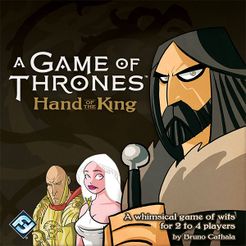 A Game of Thrones: Hand of the King
A Game of Thrones: Hand of the King Space Park
Space Park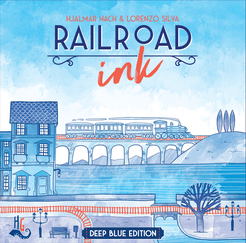 Railroad Ink: Deep Blue Edition
Railroad Ink: Deep Blue Edition nansi
nansi Marshmallow Test
Marshmallow Test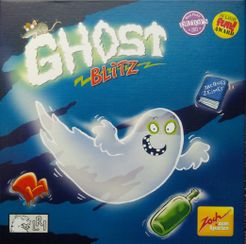 Ghost Blitz
Ghost Blitz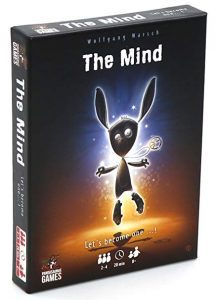 The Mind
The Mind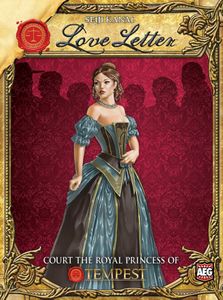 Love Letter
Love Letter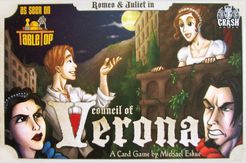 Council of Verona (Second Edition)
Council of Verona (Second Edition) Birds of a Feather: Western North America
Birds of a Feather: Western North America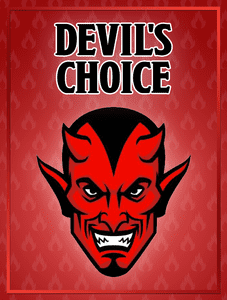 Devil’s Choice
Devil’s Choice







Add Comment